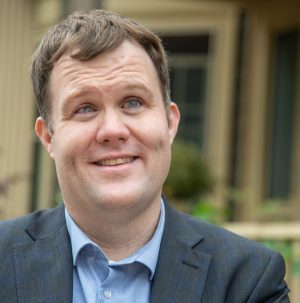Misuse of forensic hypnosis: should it still be admissible in court?
While not widely used today, forensic hypnosis is still admissible in limited court cases. Investigators still see this method as a helpful tool for memory retrieval.
James J. Watson spent over 40 years incarcerated for a crime he did not commit. His life was ruined because he was misidentified by a witness who claimed, under hypnosis, that Watson might have been a murderer.
On Nov. 16, 1979, cab driver Jeffrey Boyajian was robbed, beaten and shot in Roslindale at 4 a.m. Three eyewitnesses unanimously described seeing three Black males — two were 6 feet tall and one was 5 feet 8 inches tall — murder the cab driver. One of these witnesses, Richard Dwyer, picked out photos of two men in court — one of them was Watson — as potentially being two of the three men who murdered Boyajian. Watson was arrested on Nov. 19, 1979, for first-degree murder.
It was not disclosed to the jury that Dwyer had undergone forensic hypnosis before and after these identifications, a practice that has been long debated for its reliability and accuracy. A forensic hypnotist helped Dwyer enhance his memory from his subconscious on the day of the crime, but these memories were not accurate. Dwyer recalled the tallest suspects as 6 feet tall but then identified Watson, 6 feet 5 inches tall, a considerable height difference.
After 22 years in Massachusetts Correctional Institute at Norfolk, Watson was released on an emergency stay of execution of sentence on April 16, 2020. The case was officially closed on Nov. 10, 2020.
On Oct. 8, 2021, Watson and his attorney, John J. Barter, filed a statutory claim against the Commonwealth of Massachusetts in Suffolk County Superior Court for wrongful conviction and incarceration, asking for damages of $1 million for physical and mental pain, loss of professional opportunities and loss of opportunities to engage in family life and raise his only child. Barter declined to comment, and Watson could not be reached. After multiple messages left at the Massachusetts Attorney General’s Office, Maura Healey, the attorney general for the Commonwealth, could also not be reached.
“My father left me at 15 months [old],” said Don Juan Moses, Watson’s now 43-year-old son, in a phone interview from his home in Portland, Maine. “I went through hell.”
Watson is not the first or only person who has been falsely linked to a crime from testimony derived from forensic hypnosis, an investigative process popular between the 1950s and the 1980s. Since then, forensic hypnosis has been used less in court but is still occasionally admissible as an investigative tool. Skeptics have questioned the accuracy of forensic hypnosis for years, and critics claim that using details supposedly ferreted out of people’s subconscious is a dangerous and irresponsible method when people’s lives and freedom are at stake.
Thomas Safrin, the director of Hypnosis of Savannah, a hypnotherapy service in Pooler, Georgia, is well-versed in his 26 years in law enforcement. Although Safrin is a forensic hypnotist, he understands that it can be easy for forensic hypnotists to do the job incorrectly.
“Forensic hypnosis should not be used in every investigation. It should only be used after all other investigative tools have been used,” Safrin said. “It’s a valuable tool, but it has to be used properly.”
Otherwise, it can lead to injustices, such as Watson’s wrongful incarceration and an eerily similar story of 36-year-old Clarence Moore.
On Jan. 14, 1986, a 26-year-old woman was awoken at 1 a.m. in her home in Somers Point, New Jersey by a man strangling her and demanding money. After she offered him an amount he was dissatisfied with, he raped her. The lights were off, and the nearsighted woman did not have her contacts lenses in or her glasses on. In her statement to the police, she vaguely described her assailant as a Black male with a round face, light facial hair and no big nose or big eyes. Since her description was not specific enough, she underwent forensic hypnosis to enhance her memory, which then led her to pick out a three-year-old photo of Moore, who had light facial hair in the picture. Like Watson, Moore’s facial features did not match the victim’s description.
During the time of the crime, Moore had a thick “fu-man-chu” type mustache with an oval face and long nose, according to a summary of the case from the website of Centurion Ministries, a non-profit organization in Princeton, New Jersey that is dedicated to the vindication of the wrongly convicted. Despite this discrepancy and the fact that DNA retrieved at the scene was not Moore’s, he was convicted and incarcerated in 1986 until he was exonerated in 2001. He was 36 when he was convicted.
“For a long time after first getting out of 15 years [in prison], you see police anywhere near your home, you [think], ‘Oh man, what’s going to happen here now?’” said Moore, who is divorced now with three children, in a recent phone interview from his home in Trenton, New Jersey. “It’s always that nervous twitch you get when police are around.”
Today, Moore, who changed his name to Prince Moore, is a senior construction manager at Isles, Inc., a community development and environmental organization in Trenton, New Jersey. But his start at a new life was not easy. Before Moore was convicted, he owned private buildings, a construction company and was married with four kids — one passed away while Moore was imprisoned.
“I lost all that stuff, starting all over again,” Moore said.
Like Moore, many others have been accused of crimes they did not commit because they were falsely identified by witnesses who underwent forensic hypnosis, which is why forensic hypnosis is not used as much in today’s cases. Moore’s case in 1986 was one of the last cases to use forensic hypnosis as evidence in court before the admissibility of forensic hypnosis became more restrictive.
The first court case to involve forensic hypnosis was Cornell v. Superior Court of San Diego in 1959. Since then, several famous cases have involved forensic hypnosis, such as Ted Bundy’s case in Florida. Between the 1950s and 1990s, the use of forensic hypnosis as an aid in memory retrieval rose to popularity because it was seen as a helpful tool.
“The subconscious mind often remembers things that the conscious mind does not,” Safrin said. “Forensic hypnosis is most often thought of as a tool that investigators can use to recollect information at the subconscious level that the conscious mind seems to have forgotten but can not be readily accessed. That’s often due to trauma or that sort of thing.”
Although helpful, skeptics believe forensic hypnosis is not always the best method of memory retrieval. This is why many people, like Dr. Ronald Fisher, a cognitive psychologist and psychology professor at Florida International University, believe forensic hypnosis does not always work.
“It’s not a very reliable phenomenon,” Fisher said.
In fact, Fisher does not think hypnosis is necessary for memory retrieval. “Included within a typical hypnosis interview are things that could be done without the hypnosis induction itself,” Fisher said. “For example, putting people back into the same frame of mind as their earlier experience facilitates memory, but you don’t have to hypnotize people to give that instruction.”
Instead, Fisher suggested that cognitive interviews, a memory retrieval method of interviewing eyewitnesses developed by Fisher and his colleagues in 1984, are more reliable. Used in police investigations, cognitive interviews include four steps: reinstating the context, recalling events in reverse order, reporting everything the witness can remember and describing the event from someone else’s point of view. Cognitive interviews help witnesses recall memories better than traditional interview methods and are proven to be more reliable than hypnosis, Fisher said.
“Part of the problem with hypnosis is that they convince people that their memories are always accurate, and so they may be less likely to say, ‘I think this is what happened, but I’m not sure,’” Fisher said.
He is referring to “false memories,” a phenomenon where an individual recalls an event that never happened or recalls it differently from the way it actually happened. According to Safrin and Moussi, this is a possible explanation for why witnesses and victims may misidentify suspects when they undergo forensic hypnosis.
“Not that they’re lying, but their imagination is creating memories,” Safrin said.
To prevent this from happening, forensic hypnotists should ask their clients questions that do not lead to a “pre-desired” answer, experts say. Forensic hypnotists should ask open-ended questions like, “What did you see?” and not specific close-ended questions like, “Did you see a red pickup truck?” This was demonstrated in an example provided by Dr. Sarah Moussi, a board-certified hypnotherapist from Nezha Hypnosis Clinic in Boston. A good forensic hypnosis session should involve simple questions that do not influence the person’s answers.
This was not the case for Jane Sell.
On June 22, 1978, Jane Sell was attacked and stabbed multiple times while sleeping in her North Plainfield, New Jersey home at 5:45 a.m. Her husband, David Sell, asleep in the living room, was awoken by her screams and immediately rushed her to the hospital. Sell was unable or unwilling to identify her assailant during her stay at the hospital. When she left the hospital two weeks after her attack, the prosecutor’s office suggested that she visit a forensic hypnotist to help her retrieve her memory. Jane was in her late 20s.
Often, victims of attacks will suppress their memories, which is why officers may think hypnosis is the best way to help victims remember the attack better.
“When the self-conscious thinks you are going through a traumatizing moment, it will keep that below your conscious awareness to protect you,” Moussi said.
However, when Sell began her session almost a month after the attack, she answered questions from Det. Marilyn Pierangeli, while she was in a trance from Dr. Herbert Spiegel’s hypnosis, led her to answer in a biased way. According to Harvard Law School’s case outline of Jane Sell’s case, State v. Hurd, when Pierangeli asked Sell if the attacker she was seeing in her trance was David Sell, she answered, “No,” as heard in a tape recording of the session.
Pierangeli proceeded to ask Sell if she was seeing Paul Hurd, her ex-husband of seven years, who had continued to argue with her about the disposition of jointly owned property and visitation rights to their two children. She answered, “Yes.” After the session was over, Sell was brought out of the trance and expressed mistrust about her identification, but Pierangeli and Dr. Spiegel encouraged her to accept this identification.
Her ex-husband, Hurd, was indicted, but Jane Sell’s identification of Hurd was suppressed in court because Leo Kaplowitz, Hurd’s attorney, argued that forensic hypnosis fails to satisfy the standard for the admissibility of scientific evidence. The case was closed, and Hurd was found not guilty. Sell’s case remains unsolved, a fact that bothers her to this day.
“I feel very let down that my case was never resolved. It’s something that has stayed with me for many years,” Sell, now in her 70s, said in a phone interview with The Scope from her home in Orlando, Florida. After nearly 40 years, she still suffers from physical and emotional damages from her experience.
“Not that I’m looking for punishment. It’s the ‘who.’ ‘Who’ and ‘why.’ The ‘why?’ would be my biggest question. Nothing else. It’s the ‘why’ — why [did] this happen?” Jane Sell said. “That will haunt me forever. But I guess I’ll never know.”
Although not as popular as it once was, forensic hypnosis is still admissible today in limited cases because investigators see this method as a helpful tool for memory retrieval, despite its faults. Under hypnosis, people can remember more information objectively that does not involve their conscious emotions and feelings, Moussi said.
Since there have been inaccurate outcomes from forensic hypnosis, changes were made. Today, more procedural safeguards are installed in the system to make sure the information derived from forensic hypnosis is more accurate and likely to be admissible in court, according to the Harvard Law School’s case outline of State v. Hurd. One of these safeguards requires the information gathered from the hypnosis session to be independently verified by a third party, Safrin said.
Despite the cases of misidentification due to forensic hypnosis, skeptics should note that hypnosis is a real practice, experts say. “People tend to reject what they’re not familiar with,” Moussi said. “It’s a scientific thing. We’re not talking about magic.”
She points out that the human brain is only conscious of 5%of its cognitive activity, meaning the other 95%of the brain is unconscious. This means that when people undergo hypnosis, they can retrieve more information from their subconscious brain — forgotten or suppressed information — than if they were conscious, Moussi said.
“Hypnosis is something people do all the time,” Safrin said. “They just might not call it that.” For example, drivers may arrive at a destination and not know how they got there, but they know they were driving because their subconscious mind was guiding them, Safrin said.
Therefore, hypnosis experts reassure that hypnosis is indeed “real” — it just has to be performed under critically careful conditions. Otherwise, people may spend decades of their lives trying to push past the justice that they never got, like Moore, who found a way to rebuild his life after being incarcerated for 15 years, losing his career and his child.
“You have to be strong. You have no choice unless you [want to] just throw your hands up and give up on life,” Moore said. “I’m not going to do that.”











